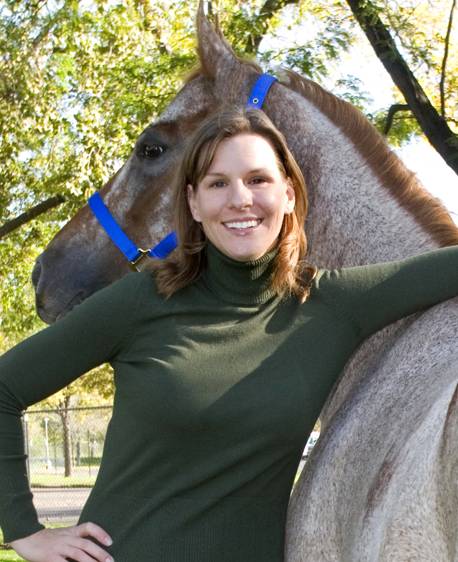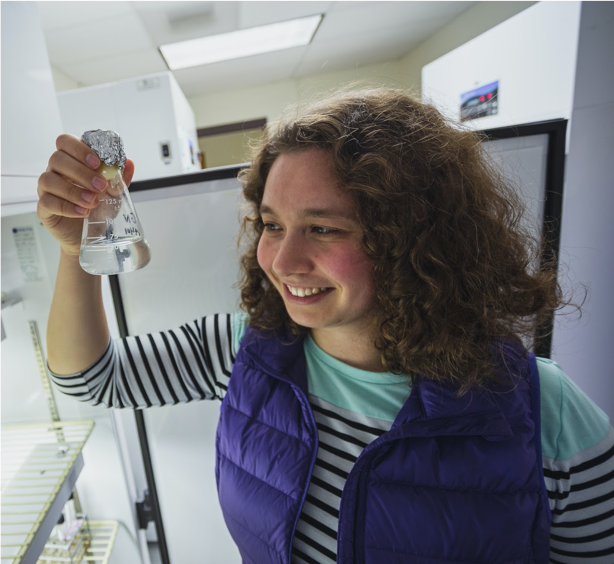About the session
Comprehensive understanding of a gene’s function requires going beyond a high-level annotation of its molecular function and biological process to a more detailed characterization of its specific role in the relevant signaling, epigenetic or enzymatic context as well as its interactions with DNA and other proteins. An integrative approach across species or conditions, combining omics with physiology-based approaches, can advance understanding and potentially lead to testable hypotheses. We are particularly excited about bioinformatics research that adapts computational tools and extends data infrastructures for model organisms to investigate phenotypes of non-model organisms, using integrative and systems-based approaches to overcome the relative lack of data in the latter.
To invite a diverse set of research presentations on this topic, we propose splitting the topic into model and non-model organisms. We believe that the core community that attends GLBIO is already very interested in the genotype to phenotype problem as it relates to human health and disease, and may contribute some interesting talks for part I. Non-model organisms and in particular, organisms whose importance is outside biomedical applications, have not been historically well-represented in this community, and we are excited to invite interesting speakers and bring this new area to part II of our session and this conference.
Session Organizers
- Lenore J. Cowen (Tufts University)
- Jane Greenberg (Drexel University)
- Judith Klein-Seetharaman (Colorado School of Mines)
- Nastassja A. Lewinski (Virginia Commonwealth University
- Hollie Putnam (University of Rhode Island)
- Hannah G. Reich (University of Rhode Island)
- Liza M. Roger (Virginia Commonwealth University)
- Rohit Singh (Massachusetts Institute of Technology)
Invited Speakers

Molly McCue, DVM, MS, PhD, DACVIM is the Associate Dean for Research and Professor Equine Internal Medicine and Genomics at the University of Minnesota College of Veterinary Medicine.
She is a veterinarian with specialty training in large animal internal medicine and is a Diplomate of the American College of Veterinary Internal Medicine (Large Animal). Dr. McCue has a MS degree in epidemiology and a PhD in Comparative and Molecular Biosciences with a focus on genetics and genetic epidemiology. Dr. McCue is an expert in equine hereditary muscle-related disorders and studies both simple and complex muscle disease in the horse, discovering mutations affecting muscle metabolism and contractility. She has a diverse research portfolio ranging from studies of single-gene mutations affecting equine disease and performance, to the unraveling of complex conditions such as metabolic syndrome and obesity. Her research shapes the field of equine genetics through the generation of tools that include, but are not limited to, single nucleotide polymorphism arrays for whole-genome analysis and mutation discovery, whole-genome sequence data and a resource for the research community to assess genetic variation, and computer software packages for improved data analysis. Dr. McCue’s lab also applies these methods to complex genetic traits in the dog including the genetic underpinnings of service dog behaviors and success.
Abstract
Integrated investigation into the molecular pathophysiology of equine metabolic syndrome
Equine metabolic syndrome (EMS) is a unique animal model if metabolic disturbances in humans and a significant health and welfare concern for horses. Despite the clinical manifestations of this disease being described nearly 25 years ago understanding of EMS is limited. Our rigorous assessment of EMS-associated clinical pathophysiologic traits in >900 horses has highlighted the need to unravel EMS pathophysiology at the molecular level through the exploration and integration of genomic, transcriptomic, metabolomic and environmental data.
Methods. Our cohort of >900 horses has been phenotyped clinically with neck- and girth-to-height ratios (measures of adiposity), fasting blood glucose, insulin, ACTH, triglyceride, NEFA, leptin and adiponectin concentrations, insulin and glucose 75 min post oral-sugar test, and for laminitis history an indicator of microvascular dysfunction and damage. Genomic data from 1.9 million genotypes from 286 Morgans and 264 Welsh ponies has been used for heritability estimation and genome-wide association. Transcriptomic data includes RNA sequencing of skeletal muscle and adipose tissue from 84 horses to asses differential gene expression and build co-expression networks. Metabolomic data including gas- and liquid-chromatography with mass spectrometry of pre- and post-OST serum from ~900 horses is being used to identify differences in metabolite abundance. Both transcriptomic and genomic data are being integrated with genomic data to narrow regions of association form GWAS and identify likely candidate genes. Environmental 2,3,7,8-TCDD toxic equivalents and 17ß-estradiol equivalents in plasma from 301 horses have been evaluated to determine the impact of persistent organic pollutants on EMS clinical phenotypes.
Key Findings and Implications. Heritability of EMS phenotypes ranged from ~0.3 (triglycerides) to ~0.9 (adiponectin) and GWAS identified ~2,000 positional candidate genes. >400 and >700 genes were differentially expressed in muscle and adipose tissue in hyperinsulinemic compared to normoinsulinemic animals. ≥150 metabolites had differing abundance in hyperinsulinemic, obese and/or laminitic horses. Integration of both transcriptomic and metabolomic data have narrowed GWAS regions of association and pointed to biologic candidate genes for further investigation. Plasma organic pollutants explained some of the variability in EMS phenotypes. Our integrated approach demonstrates that EMS impacts multiple tissues/metabolic processes, is a complex disorder influenced by genetics and environment and that integration across data types can guide allele discovery.

Dr. Zachary Cheviron Associate Professor, Division of Biological Sciences, University of Montana, http://www.chevironlab.org
Dr. Cheviron is an associate professor in the Division of Biological Sciences at the University of Montana. Research in his lab focuses on the interface between integrative physiology, functional genomics, and evolutionary biology. Using comparative analyses of species with long evolutionary histories in extreme environments, his work is aimed at uncovering the mechanistic basis of adaptive evolutionary change with an emphasis on animals that live at high elevation. Dr. Cheviron is has published over 60 papers on these and related topics, and his work is currently supported by grants from the NSF and NIH. He is also the program director for the UNVEIL (Using Natural Variation to Educate, Innovate, and Lead) network, a research and training collaborative aimed advancing our understanding of genotype-to-phenotype connections in wild populations which is supported by an NSF EPSCoR Track II award.
Abstract
Physiological genomics of high-altitude adaptation in deer mice
Evolutionary adaptation to novel environments often requires coordinated changes in multiple independent, but interacting, physiological systems. For example, reductions in barometric pressure and temperature at high elevation place severe constraints on the aerobic capacities of animals. Surmounting these challenges requires modifications to several physiological processes, and many high-elevation specialists have evolved convergent adaptations that improve oxygen delivery to and alter its consumption in respiring tissues. One of the best studied examples are deer mice (Peromyscus maniculatus), a widespread rodent with broadest elevation distribution of any North American mammal. High-elevation deer mice have evolved a suite of physiological adaptations that markedly improve whole-organism aerobic performance under hypoxia, a trait that is known to influence survival at high-elevation. While the physiological basis of high-altitude adaptation is well-characterized in this system, the genetic bases of these trait differences are not well-understood. Here, I will summarize the progress that my group has made on this front. I will highlight examples of studies that combine functional and evolutionary genomic approaches to understand both the regulatory basis of acclimatization responses, and test to whether genes associated with known adaptive phenotypes have experienced a history of natural selection at high-elevation. The results of this work not only shed light on the genetic basis of adaptive traits, but are also beginning to help form new hypotheses about the physiology of high-altitude adaptation, highlighting the reciprocal feedback and synergy of combined genomic and physiological perspectives.

Dr. Hanny E. Rivera is Postdoctoral Associate/Lecturer at Boston University in the Davies Marine Population Genomics Lab and visiting Postdoctoral Scholar at the Woods Hole Oceanographic Institution in the Meyer-Keiser Lab.
Dr. Rivera is interested in how reef-building corals respond to environmental changes at the molecular level, in particular, the symbiotic relationship between the corals and their algal partners. Her research investigates the genetic basis of thermal tolerance in corals and the cellular and molecular mechanisms that enable symbiosis.
Abstract
Gene expression and physiological signatures of thermal stress, heterotrophy, and symbiosis in the facultatively symbiotic coral, Oculina arbuscula Rivera, Hanny E., Williams, Leah M.; Dickerson, Hayden; Tramonte, Carlos; Samaroo, Jason; Gilmore, Thomas D; Davies, Sarah W.
Understanding the molecular mechanisms that sustain a healthy symbiosis between corals and their algal endosymbiont is important given the impacts of temperature-driven coral bleaching events, where symbionts are lost and coral face widespread mortality. Here, we investigate the links between symbiotic state, heterotrophy, thermal stress, and immunity using the facultatively symbiotic and calcifying coral Oculina arbuscula. By using a facultatively symbiotic coral we can investigate molecular networks that regulate symbiosis in the absence of a stress response and then elucidate how these networks are modulated by heterotrophy and thermal stress. Using RNA-Seq, we first compared gene expression profiles between aposymbiotic and symbiotic branches of the same O. arbuscula colonies under baseline conditions. We find that many of the previously implicated pathways identified in studies using bleached corals, aposymbiotic larvae, or model systems, such as Aiptasia, are also differentially regulated in O. arbuscula tissues under non-stress conditions. We also compared conserved differences in regulation across symbiotic states in other taxa including sponges and salamanders. We further explored the potential mechanisms underlying the mitigation of bleaching under increased heterotrophy. We conducted a combined feeding and thermal stress experiment to examine how gene expression and host and symbiont physiology respond. Combined, our results provide new insights into the interactions between immunity, heterotrophy, and thermal stress, and symbiotic state.

Dr. Hannah G. Reich is a Postdoctoral Research Fellow at the University of Rhode Island in the Putnam Invertebrate Ecophysiology & Epigenetics Lab.
Dr. Reich’s research leverages non-model organism culturing to study how micronutrient uptake (or lack thereof) impacts organismal stress responses. Some of Dr. Reich’s current efforts are working towards characterizing the molecular underpinnings of micronutrient uptake in coral-algal symbiosis. Ultimately, she hopes these efforts will culminate in a ‘molecular micronutrient stress’ index which will better characterize the nutritional needs of coral-algal symbioses and how they fluctuate with climate change.
Abstract
Bridging the gap between metallomics & bioinformatics to study the nutritional economy of the coral holobiont
The upkeep of the coral holobiont (host coral, dinoflagellate endosymbiont, endolithic algae, fungi, viruses, bacterial communities) is paramount to coral health and maintaining the stability of tropical marine ecosystems. Though the identity of the endosymbiotic dinoflagellate is critical to modulating the physiological capacity of these partnerships, they are also sensitive to environmental fluctuations, which further alter physiological performance. Trace metal (i.e., micronutrient) deficiency can result in marked differences in coral-symbiont growth and physiology but these responses vary substantially between and within species. In this talk, I integrate the study of micronutrient uptake (metallomics) and gene expression to better understand interspecific variation of endosymbiotic dinoflagellates. The identification of transcripts associated with micronutrient deficiency and transport allows for the creation of molecular micronutrient uptake estimations. The application of molecular micronutrient uptake estimations will allow for additional detection of micronutrient deficiency that may have been overlooked in previous studies.

Dr. Jason Gallant Education/Training: Ph.D. Cornell University, B.S. Trinity College, Hartford, CT (Biology and Human Rights), Postdoctoral Research, Boston University
Vertebrates have evolved a multitude of adaptive traits to exploit resources in the air, on the land, and in the water. Many charismatic, uniquely vertebrate traits such as fins, limbs, feathers, teeth evolved once long ago, and enabled profound diversification. While the evolution of novel traits has led to a rich tapestry of species, the single origin of these traits presents a statistical dilemma for evolutionary biologists: they are single replicate ‘experiments’ that lack power to resolve how and why novel traits evolve. For this reason, my research program focuses on electric fish, vertebrate species that have independently evolved electric organs six times. In each case, electric organs evolved to produce electric fields for the purposes of communication and navigation, and occasionally for predation and defense. Two parallel electric fish lineages have undergone rapid speciation as a consequence of electric organ evolution and exhibit convergent evolution at every biological level: from molecules to ecology. The electric fish system is therefore highly amenable to understanding the link between genotype and phenotype because it provides replicated natural experiments in which evolution has produced similar phenotypic outcomes both within and between lineages. I leverage these convergent evolutionary outcomes to tackle three broad questions on the cutting edge of evolutionary biology: (1) How do changes in the genome lead to the evolution of novel phenotypes? (2) What are the evolutionary forces that influence this process? and (3) What are the consequences of this interaction for the evolution of biodiversity? Our work is fundamentally integrative and spans biological levels of analysis and disciplines, including ecology and evolution, genomics and bioinformatics, physiology, developmental biology, and animal behavior. Our work takes place in the field, the laboratory and in silico.
NCBI Bibliography: https://www.ncbi.nlm.nih.gov/myncbi/1ZmyAV0GGcj/bibliography/public
Abstract
Using weakly electric fish to understand the evolution of convergently evolved, novel phenotypic traits
In Origin of Species, Darwin considered the convergent evolution of electric fishes as a special difficulty with his theory of Natural Selection, opining that ‘it is impossible to conceive the steps by which these wondrous organs have evolved’. Approximately 100 years later, biologists became aware of two independent radiations of electric fish species from South America and Africa that exhibit phenotypic convergence on nearly every level of biological organization. In this seminar, Dr. Gallant will give an overview of his laboratory’s research efforts to develop genomic resources and functional tools to understand the convergent evolution of electric fish and ongoing efforts to determine the proximate and ultimate causes of convergent electric signal evolution among African electric fish.

Dr. Rui Kuang Associate Professor & Director of Graduate Studies, Department of Computer Science and Engineering, University of Minnesota Twin Cities, http://compbio.cs.umn.edu
Dr. Rui Kuang is an associate professor in computer science and engineering at the University of Minnesota Twin Cities. He is also an affiliated faculty member with the BIoinformatics and Computational Biology Program (BICB) and Data Science Program. His lab is interested in developing machine learning models and algorithms for phenome-genome association analysis by mining knowledge graphs, and phenotype prediction and biomarker identification from gene expression profiling data using network-guided machine learning methods. His lab developed high-order relational learning and meta-analysis methods for integrative studies of multiple knowledge graphs, and single-cell and spatially resolved transcriptomic data. Dr. Kuang is a recipient of NSF CAREER Award in 2011. He received his PhD from Columbia University, MS from Temple University and BS from Nankai University.
Abstract
Scalable Tensor Completion Algorithms for Learning Multi-way Associations across Biological Networks
Inferring multi-way associations among the objects across multiple biological networks is a challenging high-order learning problem for bioinformatics applications such as multiple network alignment and multi-relational link prediction. Most existing methods rely on heuristic reconstruction of multi-way associations based on bipartite relations. In this talk, I will introduce our approach of modeling and predicting multi-way associations with new tensor completion algorithms. Our algorithms capture the high-order topological characteristics in the biological networks by manifold regularization with the graph Laplacian of a (Cartesian, tensor or strong) product of the networks, and then combine the product graph regularization with tensor completion to predict high-order structures. We first introduce Graph-Regularized Tensor Completion from Observed Pairwise Relations (GT-COPR) algorithm to predict disease-gene-chemical multi-relations based on protein-protein interactions network, chemical structural similarity network and phenotype-based human disease network, and the observed bipartite relations between them. Second, we also introduce Fast Imputation of Spatially-resolved transcriptomes with graph-regularized Tensor completion (FIST). FIST focuses on the spatial and high-sparsity nature of spatial transcriptomics data by modeling the data as a 3-way gene-by-(x,y)-location tensor and a product graph of a spatial graph and a protein-protein interaction network. Experimental results on Comparative Toxicogenomics Database (CTD), Genomics of Drug Sensitivity in Cancer cell line dataset and ten 10x Genomics Visium spatial genomics datasets demonstrate the advantage of modeling high-order relations and data and the importance for the bioinformatics applications.

Dr. Michelle Heck Lead Scientist and Researcher in Molecular Biology in Emerging Pests and Pathogens USDA, Emerging Pest and Pathogens Research Unit, Cornell University
Dr. Michelle Heck is a Lead Scientist and Research Molecular Biologist in the Emerging Pests and Pathogens Research Unit at the USDA ARS location on the campus of Cornell University, in Ithaca, NY where she has a joint appointment as an associate professor of plant pathology. She has been working in research on protein interactions and protein transport in plants and insects for over 20 years and has a national and international reputation as an authority in vector biology and the management of vector-borne plant disease. Dr. Heck co-leads the USDA ARS Citrus Greening Grand Challenge, which is the Agency's coordinated response to combat citrus greening disease. She has published over 50 peer reviewed journal articles and book chapters and has been recognized for her scientific excellence with awards, including: T.W. Edminster Research Associate Award, USDA ARS, 2018; Presidential Early Career Award for Scientists and Engineers (PECASE), Office of Science and Technology Policy, The Obama Whitehouse, 2017; and the Herbert L. Rothbart Early Career Outstanding Scientist of the Year, USDA ARS, 2014.
Abstract
Leveraging proteomics as a hypothesis generating, functional genomics tool in non-model organism biology
The vast majority of plant and animal viruses are transmitted by insect vectors with many crucial aspects of the transmission process being mediated by key protein-protein interactions. Yet, very few vector proteins interacting with virus have been identified and functionally characterized because insect vectors are non-model organisms and not tractable for molecular genetics research approaches. Potato leafroll virus (PLRV) is transmitted most effectively by Myzus persicae, the green peach aphid, in a circulative, non-propagative manner. A high-quality genome assembly of M. persicae is available for functional genomics studies to investigate the aphid proteins regulating virus transmission. Using an affinity purification strategy coupled to high-resolution mass spectrometry (AP-MS), we identified 11 proteins from M. persicae displaying high probability of interaction with PLRV and an additional 23 vector proteins with medium confidence interaction scores. Three of these aphid proteins were confirmed to directly interact with the structural proteins of PLRV and other luteovirid species via yeast two-hybrid. Immunolocalization of one of these direct PLRV-interacting proteins, an orthologue of the human innate immunity protein complement component 1 Q subcomponent-binding protein (C1QBP), shows that MpC1QBP partially co-localizes with PLRV within cytoplasmic puncta and along the periphery of aphid gut epithelial cells. Aphid feeding on a chemical inhibitor of C1QBP leads to increased PLRV acquisition and subsequently increased titer in inoculated plants, supporting a role for C1QBP in the acquisition and transmission efficiency of PLRV by M. persicae. We hypothesize that identifying vector proteins and the roles these proteins play in virus transmission will be crucial to developing novel, molecular-based strategies to control virus transmission by insects.
Key Dates
- More details coming soon!